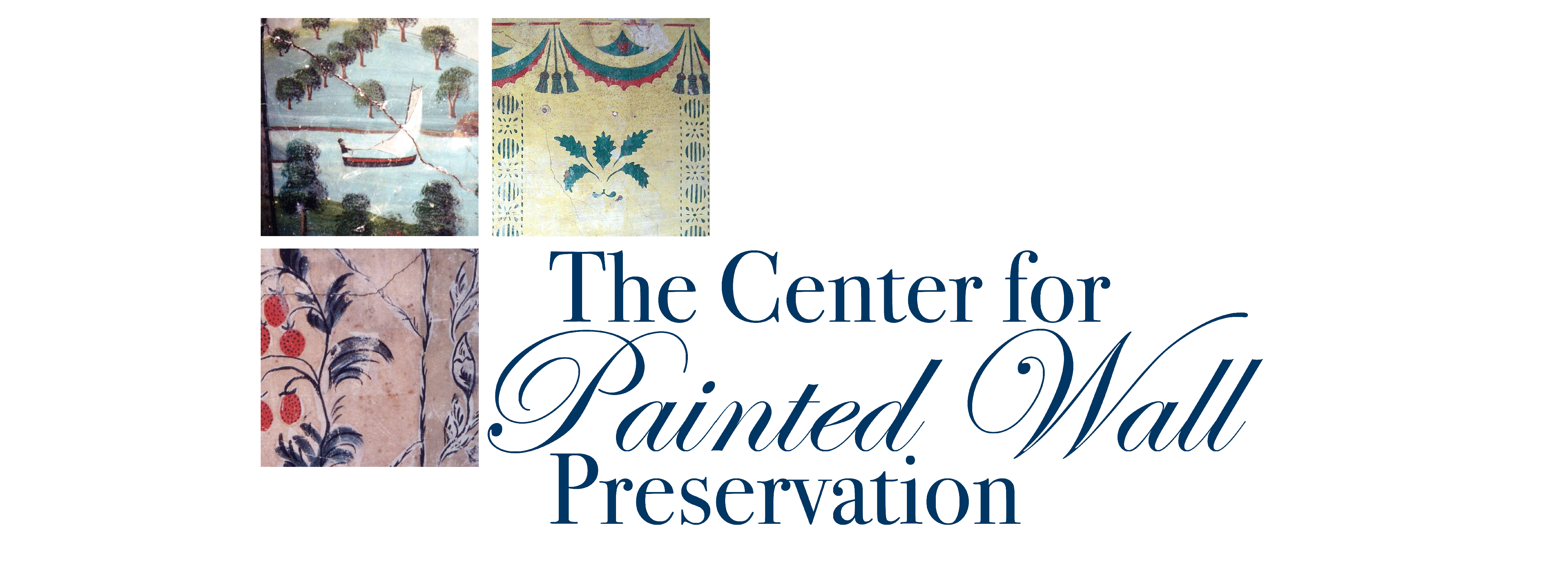
Case Studies
Paint-decorated plaster walls survive in various states of preservation and/or restoration. Some walls have remained untouched for nearly 200 years, other walls have been treated by experts, and still more walls have been reinterpreted by contemporary artists. Some remain in their original building, others have been moved to new homes. The CPWP documents walls in all their variety.
Minimal Intervention
Painted walls that have never had wallpaper, paint, or plaster layered over them and remain in an untouched condition are rare. Walls found "as is" or with minimal intervention have immense intrinsic value. Some of these rare survivals also show evidence of their early owners.


Untouched stenciling by Moses Eaton
Bridal chamber of house in Temple, NH

1840’s wallpaper imprint leaves shape of face, artist unidentified.
Minnie Rollins House, Deerfield, NH

Handwritten notes documenting special dateslike anniversaries from the Mason family, earliest in 1843
Moses Mason House Bethel, ME
Professional Restoration
Painted walls that require restoration are best cared for through the work of restoration professionals. Trained artisans and practitioners who have the expertise and understanding on painted walls materiality and historical significance. For example, wall murals should not be restored to near new condition, but rather, should reflect the artist's original intent with a reversible repair regimen on the front wall surface that allows them to show their age. CPWP lists several experienced and trustworthy professionals for various preservation/ conservation needs in the Resources section.

BEFORE

AFTER
Perley House wall murals were covered by a thin coat of plaster and then wallpaper. Plaster and wallpaper were removed to reveal a vibrant work of art.
Perley House, Naples, ME
Restored by C. C. Adams.
Removal & Reinstallation
Removing walls from their original building puts them at great risk but sometimes, if the building is under imminent threat of demolition, it is the only way to save the walls. The CPWP promotes living with murals that are original as much as possible. The original placement is important to the value of the artwork because each decorated plaster surface was individually designed by artisans to fit the space and context of a specific building. If there is no choice and walls need to be removed from their original environment there are professional, experienced architectural salvage dealers who are able to extract the walls without damage. We highly recommend a professional be engaged to guarantee the viability of a wall’s condition for the future.


Walls removed for reinstallation in a private home.
Zebulon Trickey House, Westbrook, ME


Jonathan D. Poor murals removed for future reinstallation in the Rufus Porter Museum.
Norton House, East Baldwin, ME
Reinterpretation as Art
Painted walls that are reinterpreted as art vary greatly. Some are thoughtfully salvaged walls rehung as artworks with minor interventions to stabilize them. Other walls are completely and irrevocably altered through the work of contemporary artists without regard for the original artist's intent. CPWP advocates honoring the artist's original intent and keeping painted walls as close to their original form as possible, but hopes to document all painted walls, no matter the changes they have undergone.

Mural wall from Burbank House, Mt. Vernon, ME
Installed in the library at the Museum of Our National Heritage, Lexington, MA

BEFORE

AFTER
Murals removed and overpainted by artist untrained in historical restoration methods. Note the difference in motifs and period coloration which creates a pleasant but contemporary scene.
From the T. Smith house, Westwood, MA
On view at the Westwood Public Library, Westwood, MA.
